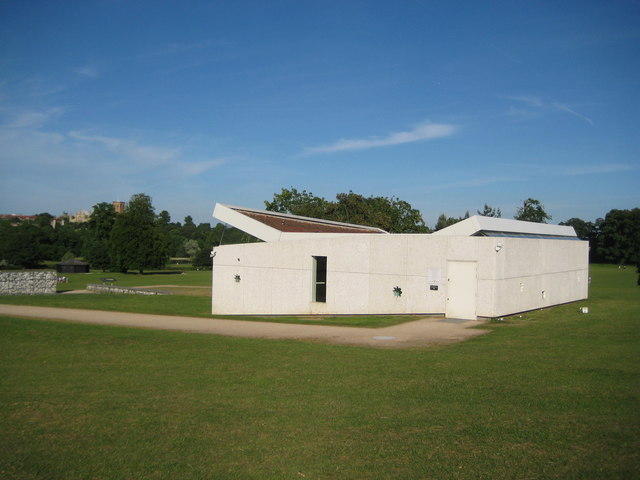


The Hypocaust is a short stroll across the park from Verulamium Museum on gravel footpaths.
Visiting
The Hypocaust is free to visit and is usually open from 10am until 3.45pm in the winter months and 4.30pm in the summer.
Mosaic and Roman Central Heating
The 1800 year old hypocaust and its covering mosaic floor were uncovered during excavations in Verulamium Park in the 1930s by Sir Mortimer & Tessa Wheeler.
It was decided to leave these in their original Roman location where they formed part of the reception and meeting rooms of a large town house. The preserved section was part of a suite that originally extended almost twice the surviving length of the room.
What is a hypocaust?
Roman hypocaust systems allowed hot air to circulate beneath the floor and through the walls of buildings. Floors were raised on brick columns (pilae) or, as in this case, trenches were cut below the floor to allow the hot air through. Part of the mosaic has collapsed into the trench below.
The mosaic covering the hypocaust was made of tesserae (small cubes) of cut stone or tile. These were set into a thin layer of fine mortar which was spread over a concrete floor. The tesserae were grouted with mortar and polished with abrasive stones. The floor may have been polished with beeswax to enhance the colours.
Accessibility
The hypocaust is reached via paths from the Verulamium Museum car park through the park and is about a 10 minute walk away. Some of the paths can become muddy at times and there is an incline up to the hypocaust building itself. The glass doors are heavy and open manually outwards, there is a walkway around the mosaic, with 4 steps at one side. There are no toilet facilities.

